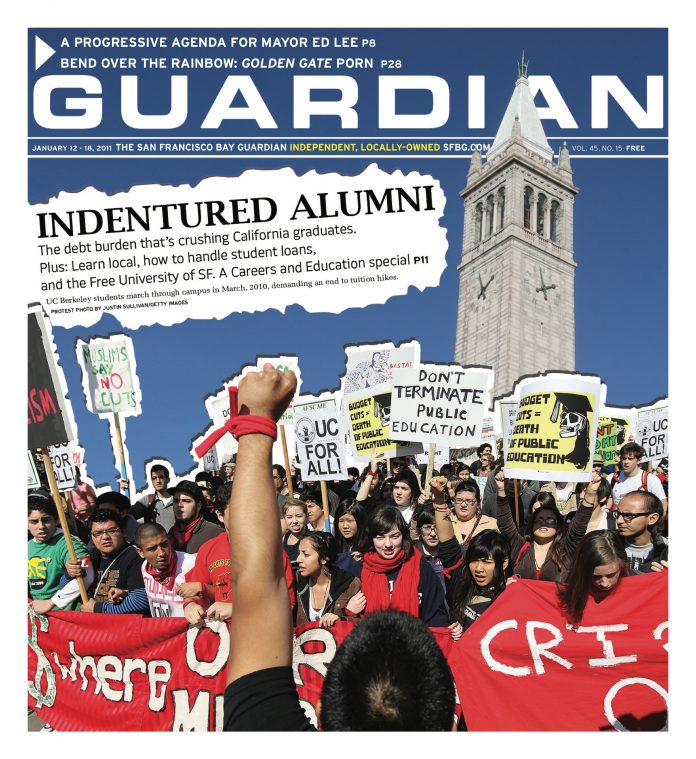CAREERS AND ED Student loans are a very special kind of debt. Like an armored car or an airplane’s black box, they are practically indestructible. While a person could sign up for a credit card, max it out on luxury items, and then wriggle off the hook of repayment by filing for bankruptcy, this escape hatch is blocked when it comes to taking out a nondischargeable student loan. Like tattoos, they stick to a borrower for life — or at least, until they are repaid.
“It’s almost impossible to discharge this debt in bankruptcy,” says Edie Irons, communications director for Oakland-based The Institute for College Access and Success (TICAS). “When you make that investment in a home, you have collateral, and you can use that asset. But when you invest in education, it’s not a guarantee. And if you can’t make those payments, the cost of collection can be pretty dear. They can garnish your wages. They can take your Social Security, your tax refunds. For federal loans, they have a lot of pretty scary powers of collection.”
Fortunately for those borrowers facing insurmountable debt, a few options (aside from feigning one’s own death) do exist for reducing, if not eliminating, the burden of student loans.
Volunteer opportunities through AmeriCorps, the Peace Corps, and Volunteers in Service to America (VISTA) provide stipends and money that can be put toward loan repayment in exchange for service. Graduates who serve through AmeriCorps (www.americorps.gov) for one year can receive up to $7,400 in stipends plus $4,725 toward loan repayment. Peace Corps volunteers can apply for deferment of Stafford, Perkins, and consolidation loans, and may receive cancellation of their Perkins Loans at a rate of 15 percent per year. Graduates volunteering with a nonprofit through VISTA can receive $4,725 for 1,700 hours of service.
Students who opt to become teachers in elementary or secondary schools serving students from low-income families can have portions of their Perkins Loan forgiven at increasing rates over the first five years of teaching, and members of the Teach for America corps program are eligible to receive a $5,350 award for each year of teaching plus postponed loan repayment with interest paid.
Two recently created programs also broaden the options for graduates facing insurmountable loan debt. The federal Income-Based Repayment (IBR) program is a new payment option for federal loans for borrowers who have enough debt relative to income to qualify for a reduced payment. Borrowers who earn less than 150 percent of the poverty level (that’s $16,245 for an individual) pay nothing; those who earn more can have loan payments capped at 15 percent of whatever they earn above that amount and forgiven entirely after 25 years of payments.
The Public Service Loan Forgiveness programs offer debt forgiveness for graduates entering certain fields. According to the program website (www.ibrinfo.org), eligible borrowers are people employed in nonprofit, 501(c)(3) organizations and people who work for federal, state, local, or tribal government. The program forgives remaining student loan debt on most federal loans after 10 years of eligible employment and qualifying loan payments. Law students entering public service can learn more about this program and others through Equal Justice Works (www.equaljusticeworks.org).
While these options may offer a boost for borrowers with federal student loans, those with private loan debt may not be as lucky. Irons notes that TICAS is engaged in efforts to encourage legislators in Washington to consider treating private loans “more like other consumer debt rather than this extra harsh treatment.”
“We want to see that changed,” she said. “People who are playing by the rules shouldn’t be punished when things go horribly wrong for them. Right now, there’s almost no way out of private loan debt.”

